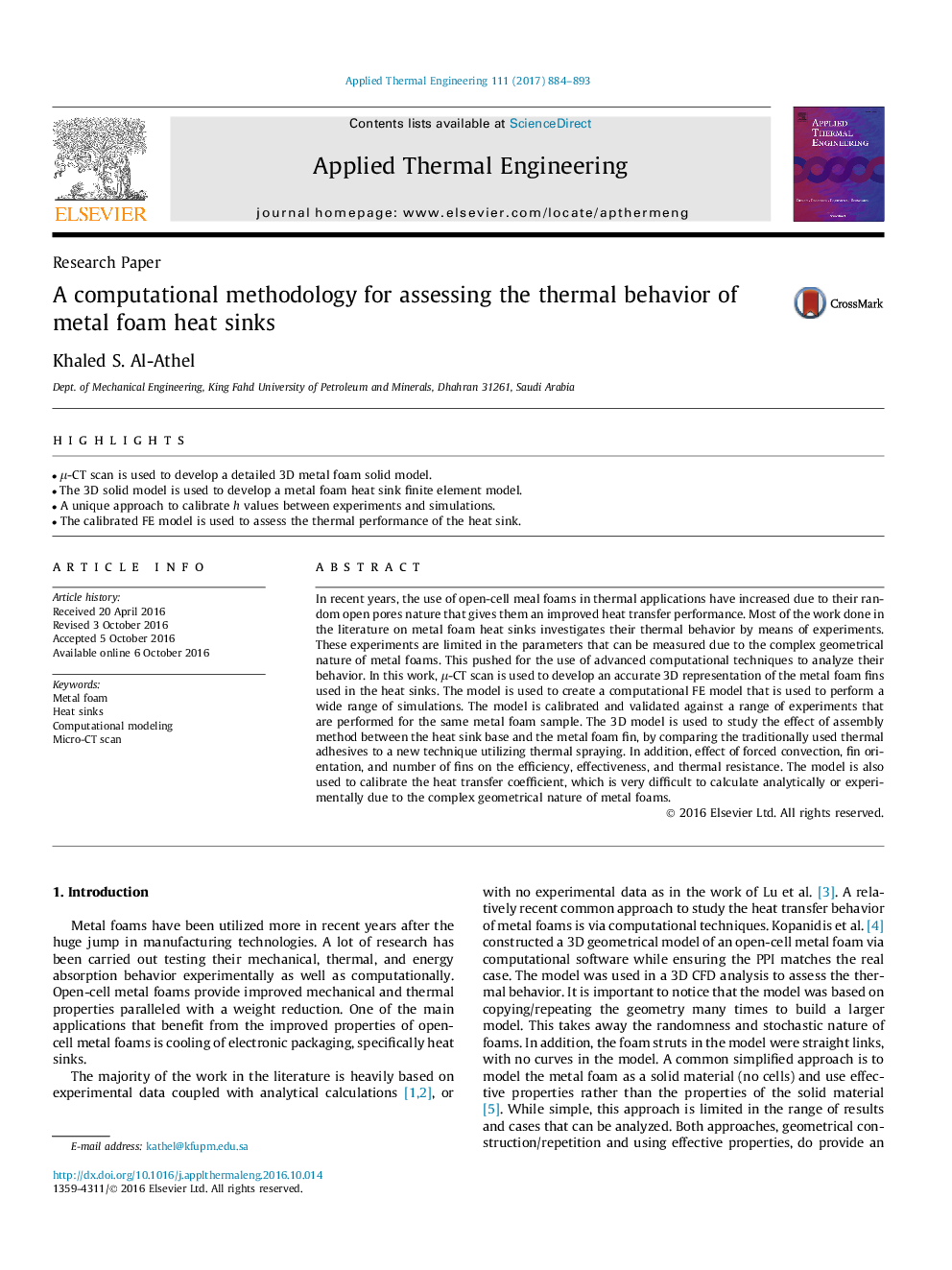| Article ID | Journal | Published Year | Pages | File Type |
|---|---|---|---|---|
| 4992171 | Applied Thermal Engineering | 2017 | 10 Pages |
Abstract
In recent years, the use of open-cell meal foams in thermal applications have increased due to their random open pores nature that gives them an improved heat transfer performance. Most of the work done in the literature on metal foam heat sinks investigates their thermal behavior by means of experiments. These experiments are limited in the parameters that can be measured due to the complex geometrical nature of metal foams. This pushed for the use of advanced computational techniques to analyze their behavior. In this work, μ-CT scan is used to develop an accurate 3D representation of the metal foam fins used in the heat sinks. The model is used to create a computational FE model that is used to perform a wide range of simulations. The model is calibrated and validated against a range of experiments that are performed for the same metal foam sample. The 3D model is used to study the effect of assembly method between the heat sink base and the metal foam fin, by comparing the traditionally used thermal adhesives to a new technique utilizing thermal spraying. In addition, effect of forced convection, fin orientation, and number of fins on the efficiency, effectiveness, and thermal resistance. The model is also used to calibrate the heat transfer coefficient, which is very difficult to calculate analytically or experimentally due to the complex geometrical nature of metal foams.
Related Topics
Physical Sciences and Engineering
Chemical Engineering
Fluid Flow and Transfer Processes
Authors
Khaled S. Al-Athel,
